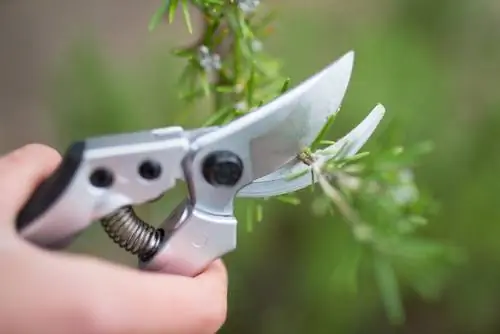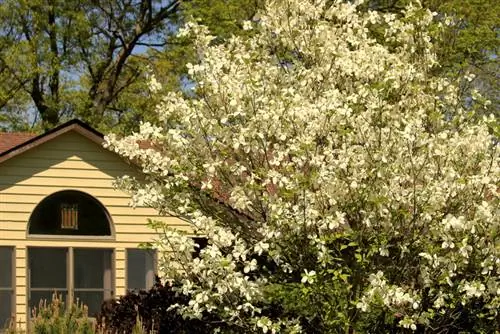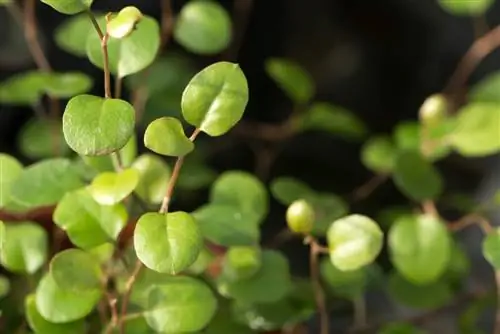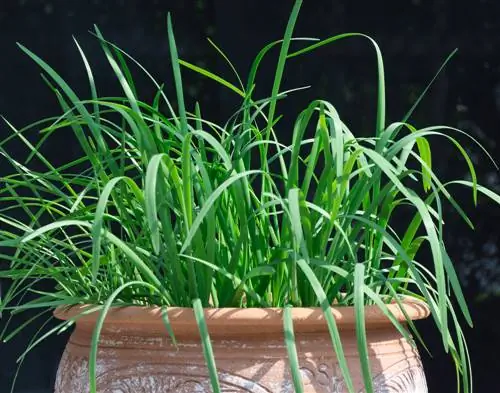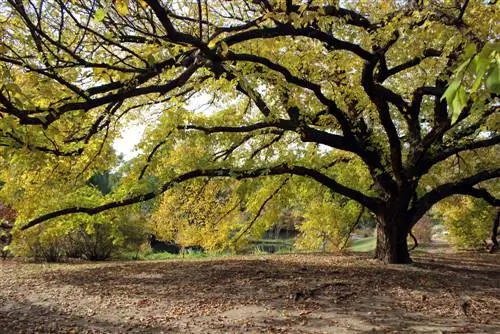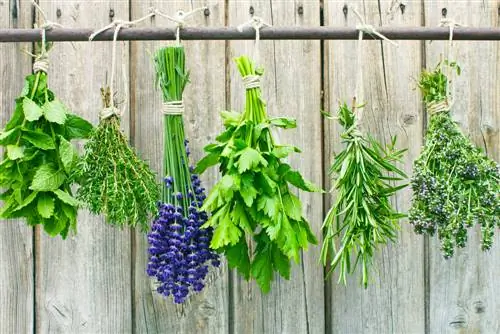- Author admin [email protected].
- Public 2023-12-16 16:46.
- Last modified 2025-06-01 06:02.
Herbs benefit from pruning care that goes beyond harvest pruning. Compact, dense and vital growth is the reward for the effort. When and how you cut depends on the growth habit. This guide has summarized the most important tips for the perfect herb cut.
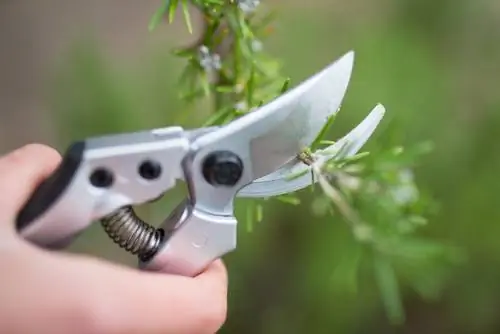
When and how should you cut herbs?
Cutting herbs depends on their growth habit: annual short-lived, perennial herbaceous and woody subshrubs. Perennial herbs should be cut at ground level in late autumn or spring, while woody subshrubs should be cut back by one to two thirds in spring.
Growth habit dictates cutting style
How a herb plant grows determines the correct pruning care. Roughly outlined, the following three categories thrive in the herb garden:
- Short-lived annual herbs that die after seeds ripen
- Herbaceous, perennial herbs with perennial growth
- Subshrubs and shrubs that become woody from the base
Apart from the short-lived types of herbs, it pays to blend your floral aroma artists once a year beyond the harvest. The best cutting tool for this important maintenance measure is a pair of sparkling clean, sharp secateurs (€9.00 on Amazon) with a bypass mechanism.
Cutting perennial, herbaceous herbs - this is how it works
Popular types of herbs, such as chives, lemon balm or comfrey, thrive like perennials. Every spring the tasty, herbaceous shoots emerge from their hardy root ball. Only after the first frost do the above-ground parts of the plant retreat again. How to cut perennial herbs correctly:
- Best time is in late autumn
- Alternatively cut in early spring
- Cut off all shoots at ground level
In regions with harsh winters, it is recommended to use the dead shoots and leaves as natural winter protection for the root ball.
Cut spicy subshrubs in spring
In the top league of herbs you can find magnificent species such as rosemary, sage, lavender and thyme. Regardless of their diverse attributes and differences, the herbal beauties all thrive with woody shoots. This growth requires annual pruning. When shoots become woody, growth usually comes to a standstill and the aromatic harvest fun comes to an end. How to cut the spicy subshrubs correctly:
- The best time is in spring, when there is no longer any risk of frost
- Thimout dead, damaged and frozen shoots at ground level
- Cut back remaining shoots by one to two thirds
- The herb plant should ideally be cut in a hemispherical shape
- Care: do not cut into old, leafless wood
Lavender and flowering sage give you a second round of flowers when you clean out the herb plants in summer. Cut off spent flower heads until you reach the next pair of he althy leaves. As a result, the late summer sun's rays bring previously dormant buds to life. Furthermore, you prevent the energy-sapping formation of seed heads and prevent unwanted self-sowing.
Harvest whole shoots
In conjunction with harvest pruning, you can effectively counteract premature and progressive woodiness. You can do this by always harvesting entire shoots from herbal sub-shrubs. Choose the intersection point so that it is still within the leafy area. The herb plant then sprouts again with herbaceous, tasty shoots.
Tip
It belongs in the land of fables that flowering chives are poisonous. In fact, the woody flower stalks are not a culinary revelation, but are nevertheless safe for consumption. You can delay the start of the aroma-destroying flowering period by regularly cutting back the tasty tubular leaves to just a few centimeters. Simply freeze the valuable clippings.

